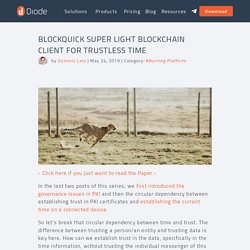

Circles Network (Local Currency Experiments for UBI @ Berlin) 2019 05 02 domain driven design introduction. Economics as if people and the planet mattered - by New Economics Forum. Patterns for… by Richard D. Bartlett. This is a book about working in groups, based on 8 years experience in community projects and startups.

I’m not so interested in what you’re working on together, I’m just going to focus on how you do it. To my way of thinking, it doesn’t matter if you’re trying to build a better electric vehicle, or develop government policy, or blockade a pipeline; whenever you work with a group of people on a shared objective, there’s some stuff you’re going to deal with, some challenges. How do we decide what we’re working on?
Who does what? Who can join our team? I’m convinced there is not a “one size fits all” recipe, a management structure that you can take off the shelf and install in your collective or your company. This is a book for community organisers, leaders, managers, consultants, coaches, facilitators, founders... if you work with groups of humans, these patterns apply to you. Why publishing a work in progress? This book is not 100% complete yet. The Guerrilla Translation Handbooks - Guerrilla Media Collective Wiki. The Guerrilla Translation Handbooks are our living guide to the day to day workings of the collective, structural and cultural.

Read more about the handbooks in this article. Current edition: Summer 2019 The following is extracted from Let Me Handbook That For You: A User's Guide To Open Value Cooperativism, our introductory article to the handbooks: Documentation is a very important aspect of the work that we do in Guerrilla Translation. As an experiment in Open Value Cooperativism, we expect to make mistakes and discover new ideas as we develop, grow and maintain our collective. Guerrilla Translation’s first major documentation project was the Guerrilla Media Collective Wiki. Here is where we keep track of the online versions of the Handbook and what changes have gone into them.
How to build a theory of change — NCVO Knowhow. A theory of change is a description of why a particular way of working will be effective, showing how change happens in the short, medium and long term to achieve the intended impact.

It can be represented in a visual diagram, as a narrative, or both.A theory of change can be developed at the beginning of a piece of work (to help with strategic planning), or to describe an existing piece of work (so you can evaluate it). It is particularly helpful if you are planning or evaluating a complex, initiative but can also be used for more straightforward projects. See more in our summary of the uses of theory of change.It is helpful to involve a variety of stakeholders when you develop a theory of change – you could include staff, trustees, beneficiaries, partners and funders. The development process, and the thinking involved, is often as important as the diagram or narrative you produce. Plan your process Collect evidence of need and context Agree your intended impact Identify outputs. Civic Design Book (Multi-lang > 100mb) CCIAbookPeoplePoweredMoney. Boundaryless New Foundations of Platform Ecosystem Thinking Whitepaper 15. DisCO Elements v1 3. DisCO Manifesto v.1 1 mono.
Blockquick Super Light Blockchain Client For Trustless Time. - Click here if you just want to read the Paper - In the last two posts of this series, we first introduced the governance issues in PKI and then the circular dependency between establishing trust in PKI certificates and establishing the current time on a connected device.

So let’s break that circular dependency between time and trust. The difference between trusting a person/an entity and trusting data is key here. How can we establish trust in the data, specifically in the time information, without trusting the individual messenger of this data? This is, in fact, leads to the same problem that Satoshi Nakamoto set out to solve with bitcoin the first blockchain network. Conveniently for our quest to getting the current time without trusting anyone both trustless blockchains Bitcoin and Ethereum carry a timestamp in their block. When HTC announced that their new Handheld Exodus 1s will be running a full Bitcoin node that immediately raised eyebrows. Just 20kb to validate the blockchain.